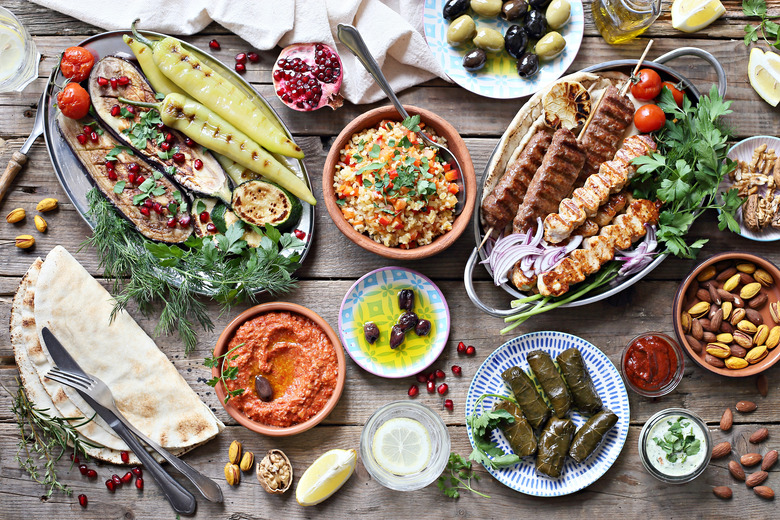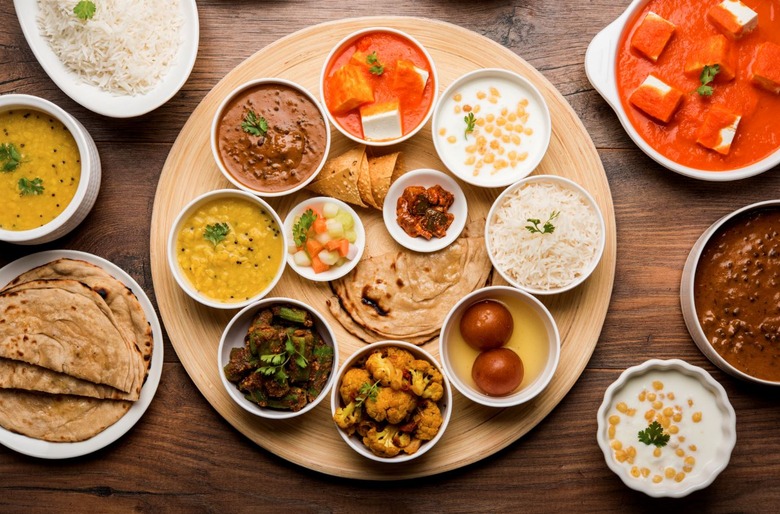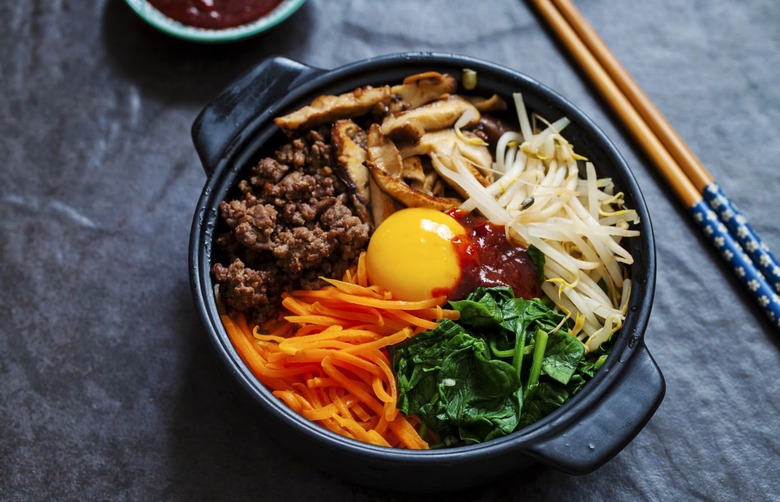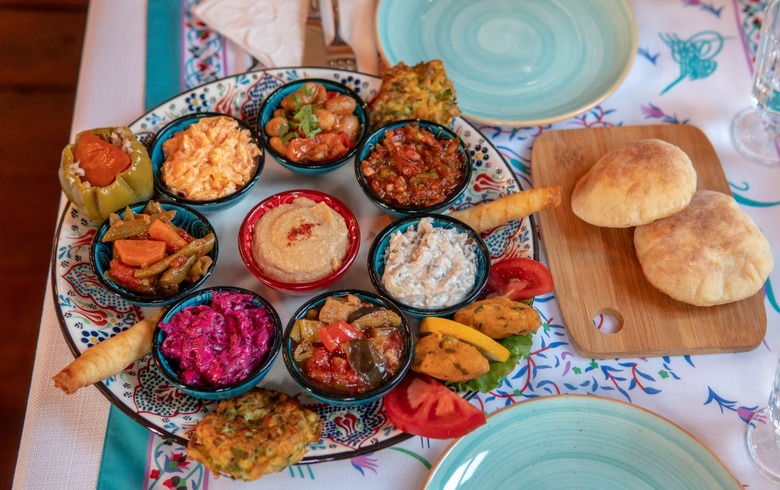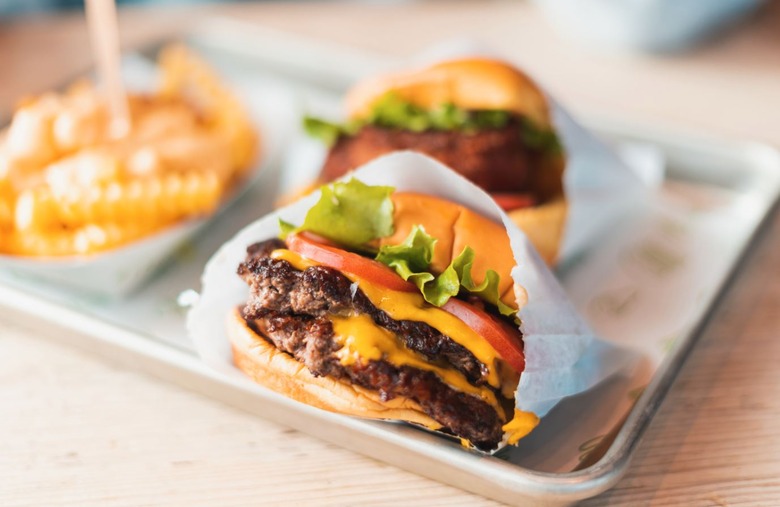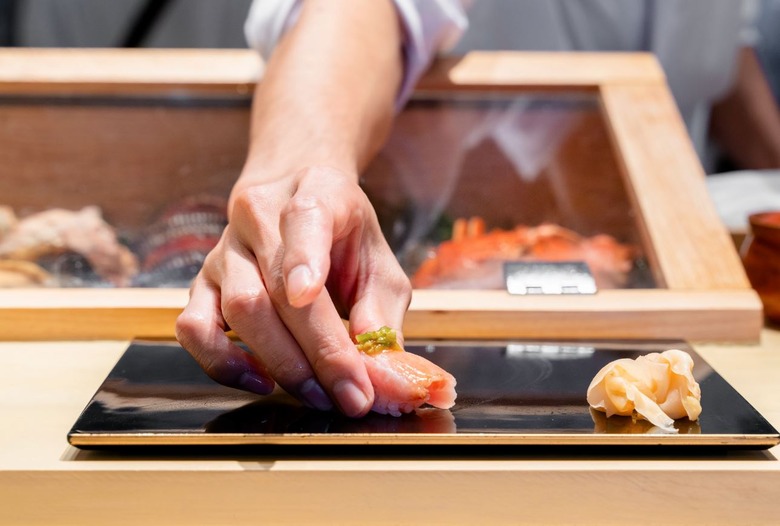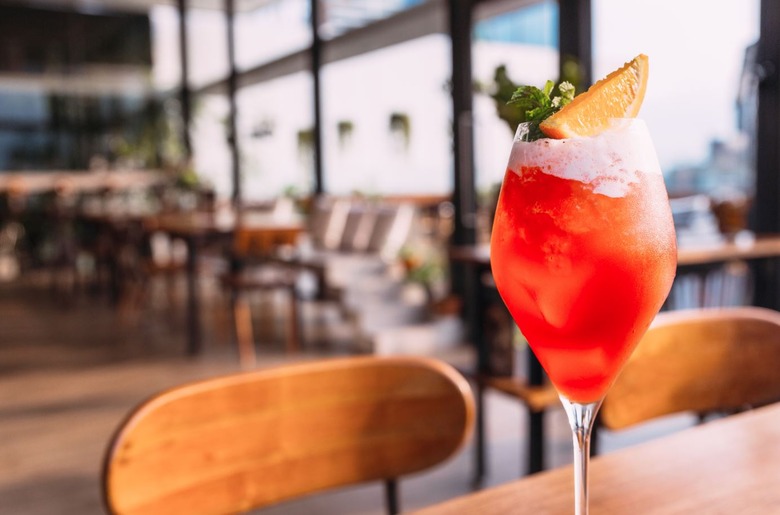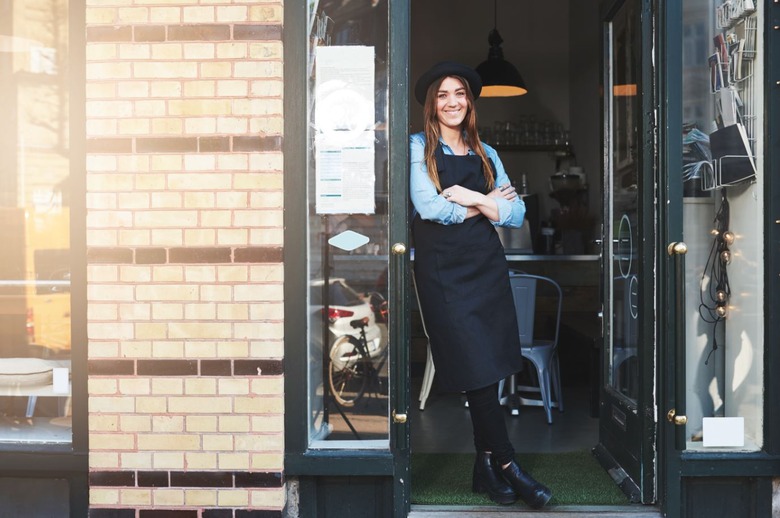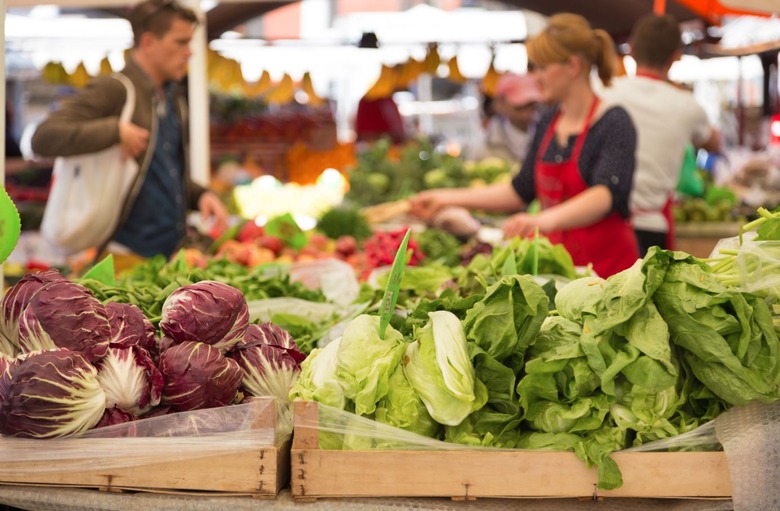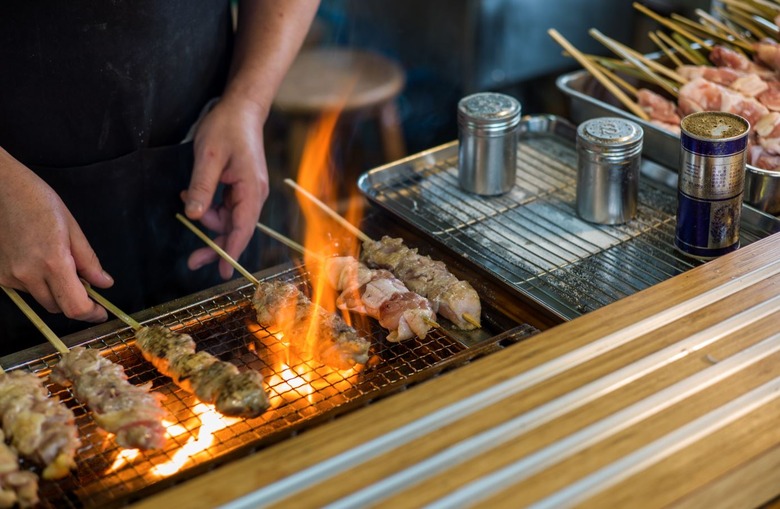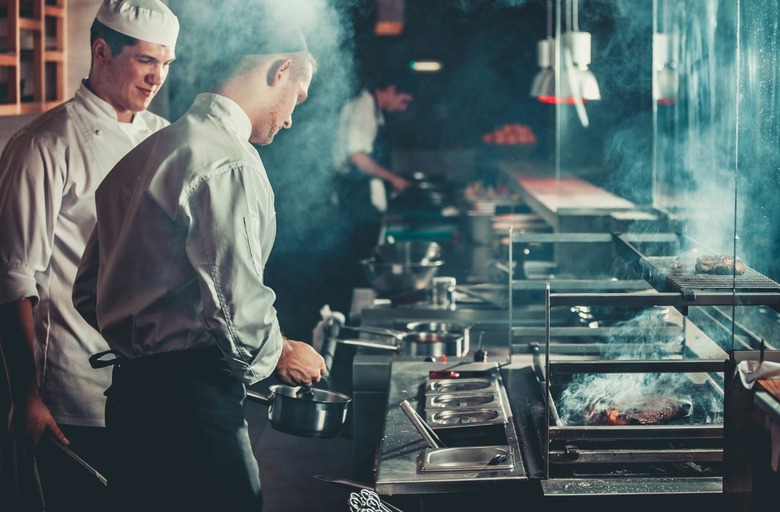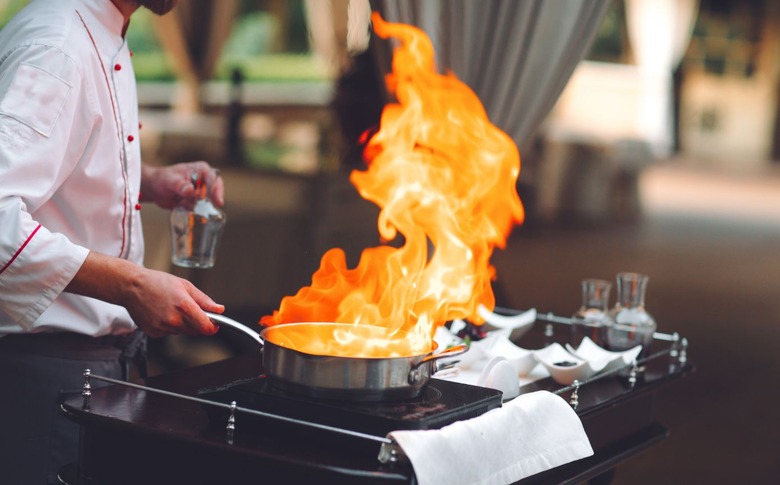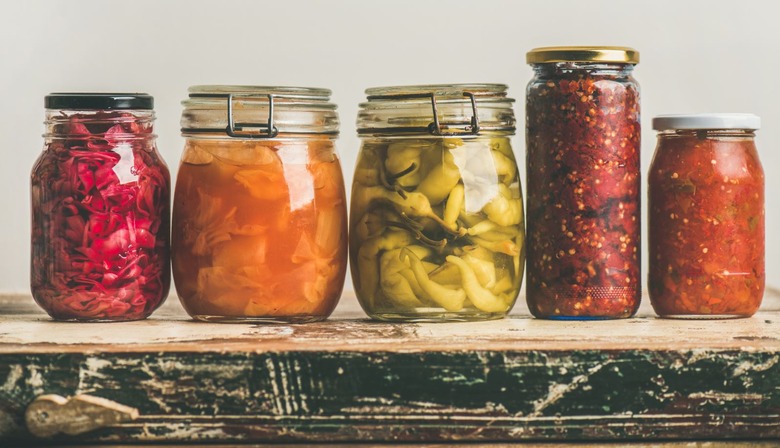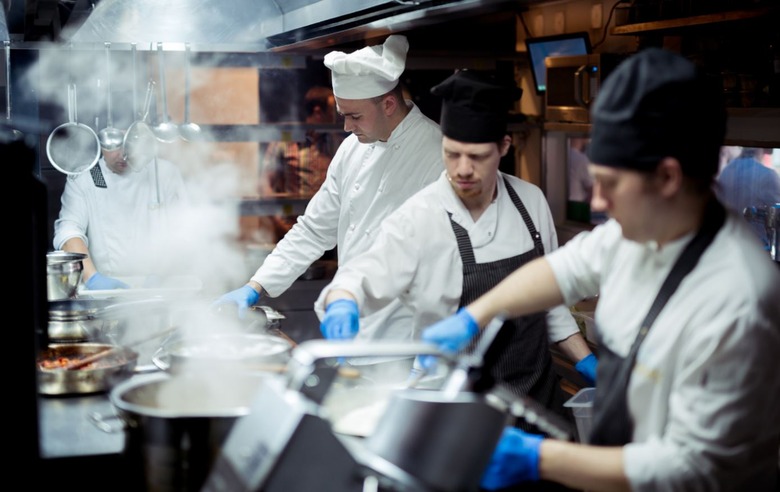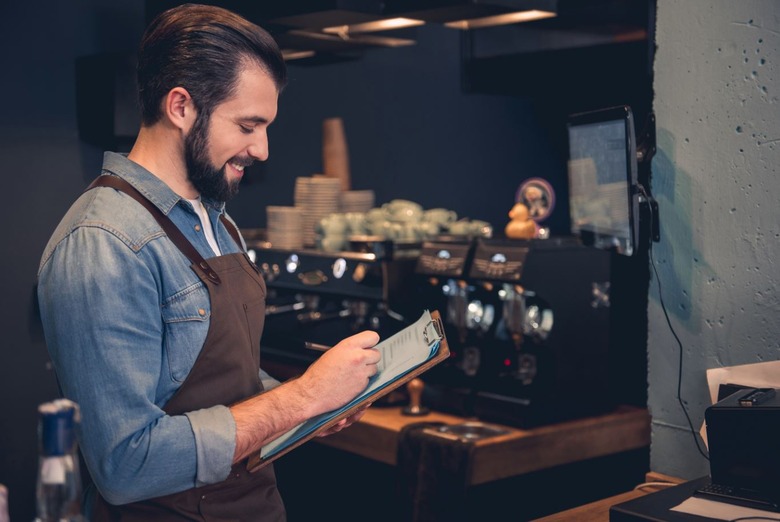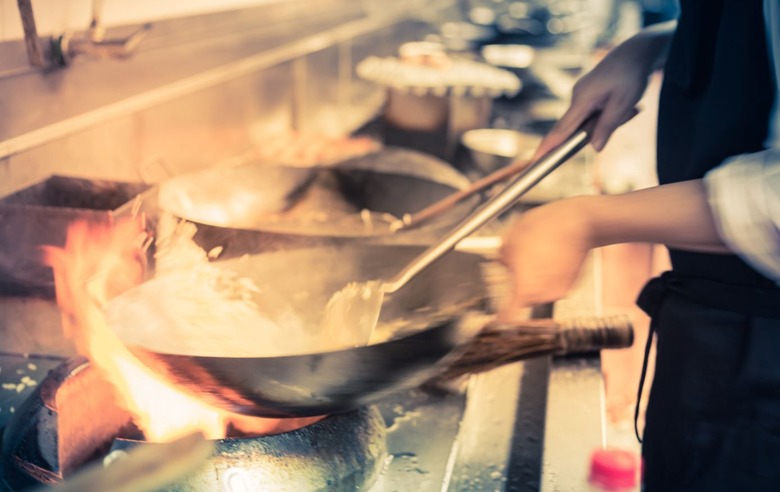The Biggest Restaurant Trends Of 2019
As 2019 draws to a close, we can begin to look back at the year that was. Specifically, the restaurant year that was. While every restaurant is different, and America is a very large country, some trends have become undeniable across the dining landscape over the past 12 months.
But don't just take our word for it. We reached out to chefs and restaurateurs from across the country and asked them to weigh in on what 2019's biggest restaurant trends were, and they came through. These trends don't just sum up what 2019 looked like, they also give us a glimpse of what we can expect to see more of in the years ahead.
Meatless dining
The meatless trend continued unabated in 2019, and even meat master Pat LaFrieda Jr., the CEO of Pat LaFrieda Meat Purveyors, is on board. "I love the plant-based burger craze and my company was one of the first to endorse the Impossible Burger," LaFrieda said, via email. "We need alternative proteins as our population continues to rise and we welcome these meatless alternatives."
"In 2019, we've seen a huge rise in plant-based cuisine," said Guy Vaknin, chef and owner of New York's vegan sushi concept Beyond Sushi. "People are more aware of the negative impacts of meat consumption, and restaurants are adapting to the increased demand for sustainable and cruelty-free food."
This trend is best exemplified by the increase in great vegan-friendly restaurants as well as fast-food items like the Impossible Whopper, Dunkin's Beyond Meat breakfast sandwich and KFC's Beyond Meat fried chicken, all of which were introduced this year.
Modern Korean food
"In a very welcome development, we have seen Korean traditional flavors and techniques such as marinating and fermentation becoming part of the toolset of American cooking," said Joe An, the CEO of California "fine casual" Korean concept Bibigo Kitchen. "Today's palates want bolder flavors and healthier ingredients, which is a hallmark of Korean cuisine. We've taken steps to bring Korean cuisine mainstays such as BBQ, Korean fried chicken, kimchi and bibimbap to the plate in a deconstructed manner so that our guests can appreciate and understand each of the ingredients. Incorporating Korean flavors is more inviting than ever whether you want to use a single signature ingredient or build an entire meal around the cuisine."
Middle Eastern cuisine
"What I noticed in 2019 was the explosion of Middle Eastern cuisine across the country," Giuseppe Tentori, the chef/owner of Chicago's GT Fish & Oyster and GT Prime, said. "The concept of shareable dips and spreads seems to have become increasingly commonplace over the past year."
Smash burgers
"Smash burgers [smallish burgers that are "smashed" down onto a griddle to develop a deep crust] are a big trend right now," Ed McFarland, chef/owner of New York's Ed Lobster Bar, told The Daily Meal. "While there are varying degrees of smash, the end result is a thin, perfectly browned and crisped patty. They are usually oozing in cheese and bring back a real old-school burger nostalgia." Several of the 101 best burgers in America fit this bill.
Omakase-style dining
B.K. Park, the executive chef at Chicago's Michelin-starred Mako, has noticed an uptick of plays on omakase-style dining, a traditional style that's focused on a progression of many small courses (usually of sushi).
"Omakase has surged and is more popular than ever before," he said. "The most interesting part is seeing how restaurants across the country are reinventing the experience in different ways for modern diners. Chefs are still drawing inspiration from classic Japanese techniques, but they are getting creative. From 'express' omakases and cocktail omakases to more affordable mini-omakase menus and even omakase spaces that accommodate larger groups like we do at Mako — it's all very exciting. I think we should expect to see even more out-of-the-box formats in 2020."
Ghost kitchens
For the uninitiated, ghost kitchens are online restaurants that only offer delivery, and they're on the rise as the popularity of delivery services like Postmates, Uber Eats and GrubHub increases. Ghost kitchens, which can be located in a commissary kitchen or in the kitchen of an existing restaurant, allow restaurant owners to cut overhead costs.
"We definitely see a shift towards ghost kitchens since we started making use of our current kitchen to launch Ghost Burger," Tom Rowse, owner of Ghost Burger, a New York restaurant that operates solely via delivery through Grubhub and Uber Eats, told The Daily Meal. "Maximizing the use of our kitchen is important to maximize profits, so to be able to run an additional food concept and offering it out of an already established restaurant can grow profits without increasing overhead."
Low-alcohol cocktails and mocktails
"On the beverage side, low-ABV cocktails had the spotlight," said chef John Fraser of the Michelin-starred Nix and The Times Square EDITION hotel. This is a fact that can be backed up by just about anyone who's visited a cocktail bar in the past year.
Mocktails — alcohol-free cocktails — are are having a moment in the sun. "People are always trying to be healthier and the idea of the mocktail fits that trend," said Nico de Soto, partner at Miami's Kaido. "My style of mixology has always been flavor focused, which you are finding more of when the liquor component is being removed."
Female restaurateurs
"My favorite trend is the rise of the woman as the restaurateur," Jen Pelka, the founder and owner of San Francisco's and New York's The Riddler, told The Daily Meal. "Women chefs have broken out of the kitchen and it's really exciting to see women at the helm of the entire business, operating as restaurateurs — a position within the restaurant industry that has been primarily male-dominated. Great examples are the women behind [New York's] King, Ariel Arce with her mini empire of four [New York] restaurants, Missy Robbins [of New York's Lilia and Misi], and all of the women from La Cocina, the culinary incubator in San Francisco, such as Reem Assil, Heena Patel and Nite Yun."
Responsible sourcing and cooking
"I think we've made great strides in terms of our levels of responsibility as operators," said John Johnson, executive chef at the Four Seasons Hotel New York. "Particularly this year, in a growing commitment to sustainable and biodegradable packaging and service wear, thoughtful menu planning, and a strengthening awareness for responsible sourcing of ingredients, especially seafood and vegetables."
"Zero-waste cooking is a big focus in restaurants at the moment," said chef Thanawat Bates of Miami's Habitat. "This trend means leaving the roots in vegetables, and preparing meat-centric dishes with everything from the nose to tail. One specific dish at Habitat that adopts this practice is our Carrot Salad. Carrot is peeled completely, then we juice the trimmings until they are dry, which we then puree with shallots to use in the salad. The raw carrot is shaved as a garnish in the salad as well."
Izakaya-style dining
Izakayas are casual Japanese pubs that specialize in comforting snacks like yakitori (meat skewers cooked over hot charcoal, a method of cooking called robata). Several chefs have noticed an influx of this style of dining (and drinking), including chef Joaquin "Quino" Baca of New York City's new izakaya Būmu.
"The continued rise in popularity of izakaya-style dining (and yaki-skewers in particular) are one of the biggest restaurant trends of 2019, in part because of the increased interest in Asian-inspired dining," he said. "We're hoping to see restaurants in New York continue to embrace shareable plates and provide diners the ability to experiment with new flavors and mix and match dishes, rather than be confined to one entree choice. It also creates a more communal and shared experience when dining out."
Rustic sourcing and cooking
"The desire to return food to a more primitive state is growing," said Marcus Paslay, the executive chef and owner of Piattello Italian Kitchen and Clay Pigeon in Fort Worth, Texas. "Ingredients are sourced through hands-on experiences such as hunting, fishing and farming. At the same time the desired cooking techniques are more and more rustic, such as open fire cooking. This is creating a more intimate and meaningful experience between the ingredient and the consumption of it." This ethos is perhaps best exemplified by chef Joshua Skenes at his San Francisco restaurants Saison and Angler, both of which are among the 101 best restaurants in America.
Natural wines
"A lot of restaurants are dabbling in the broadly-defined 'natural' wine movement with wines that are organically or biodynamically grown or unfined and unfiltered with very little intervention in the actual winemaking process," said Zach Engel, the James Beard Award-winning chef/owner of Chicago's Galit. "Pretty much everyone has a pét-nat [pétillant naturel, a bottle-fermented sparkling wine] on their list this year."
"People like them as dirty as they come, with skin contact and long macerations minus any filtering or fining," Zac Adcox, the beverage director at Indo in St. Louis, Missouri, added. "Organic and biodynamic offer a livelier, honest flavor."
New York’s ‘golden age of slice shops’ continues
The classic New York-style slice has been having a major moment over the past couple years, with the openings of pizzerias including Paulie G's Slice Shop, F&F Pizzeria, Upside and Norm's, several of which are among the best pizzerias in America. "We're seeing a golden age of slice shops where owners and chefs are placing more importance than ever on quality of ingredients and sourcing," said Noam Grossman, owner of Norms and Upside. "It's a great thing to see because it pushes all of us in the industry to be more accountable with the products we're providing every day."
Chef collaboration
"2019 was the year of the chef collaboration," Billy Olivia, the chef at New York's famed Delmonico's, told The Daily Meal. "More and more, we've been seeing major chefs teaming up for exclusive pop-up dinners and collaboration series, and prominent restaurants getting their chefs together in each other's kitchens for a special evening, even if they have to fly across the country. Customers are seeking out more unique, one-of-a-kind experiences — so they're excited to taste what happens when a couple of talented chefs get together for one night only to create something new." He pointed to collabs between Atomix and SingleThread, Delmonico's and CUT by Wolfgang Puck, and Junoon and Cafe Boulud as recent examples.
Tableside cooking
"What we've noticed is that nowadays, people are definitely looking for more entertainment while dining — the whole experience, not just the taste of the food, is valued, and guests want to feel involved in the cooking process, at the spectator level," said Ralph Brennan, co-owner of New Orleans' legendary Brennan's (home to one of the best brunches in America). "So, while bananas foster has always been the star dish of tableside preparation, more dishes are getting in on the interactive action."
Familiar hospitality
"The biggest restaurant trend I noticed in 2019 was a return to familiar hospitality," said Francesco Panella, owner of Brooklyn's Antica Pesa. "Many restaurants offer familiar, comfort food-based dishes and their hospitality has also changed to reflect this. Now restaurant dining has become just as much of a personal experience as dining at someone's house."
Michael Rubinstein, executive chef at Momofuku Las Vegas, agreed that we're seeing "less tweezers-focused food, molecular gastronomy and micro-greens and more focus on origin and stories of certain dishes."
Unusual spirits
"It's been a bit of an arms race to uncover and incorporate unique, or more aptly foreign, spirits such as baijiu and bacanora into cocktails," Chris Patino, co-owner of San Diego cocktail bar Raised by Wolves, said. "In fact, one of the best selling cocktails at Raised By Wolves uses bacanora [an agave-derived liquor similar to tequila] as the base spirit, which would have been unheard of a few years ago."
"With the rise in popularity of Japanese whisky, there is an interest in all spirits from Japan," Jules Gomez, the beverage manager at Miami's Zuma, added. "This could quite possibly be the reason Shōchū [a traditional Japanese liquor] is growing at the present time here in the States. Shōchū is a newcomer to the U.S. stage and has been rising in popularity over the last ten years, even though it outsells both sake and whisky in Japan."
Fermentation
"I think the biggest trend of the year has been the resurgence of the age-old process of fermentation — throughout history, used for means of preservation," Jimmy Papadopolous, chef/partner at Chicago's Bellemore, said. "In today's modern kitchen, it's a weapon of flavor in a chef's arsenal of techniques."
Chef-in-residence programs
"Chef collaboration and popups are a great way for chefs to flex their creative muscles in a new environment but are not weighed down by rent and revenue," Susan Buckley, partner at Miami's Three Winwood, said. "It's also a fun trade for the host restaurant and their audience because it shakes up the dining experience and gives everyone something new to talk about." Other chef-in-residence programs include New York's Chef's Club and Intersect by Lexus.
Employee benefits and wellness
"We are excited to see that there has been an improved trend with regards to restaurant employee health and wellness," noted Andrew Ghetia, owner-operator of 4505 Burgers & BBQ in Oakland, California. "We have been fortunate enough to implement an employee assistance program (EAP) at our restaurants, which offers free and confidential counseling and assistance to employees with personal or work-related problems, which can cover a range of issues from stress to alcohol abuse or grief."
Restaurant employees are noticing the trend as well. "I love that restaurant owners are starting to finally prioritize the employee," Eric Ehler, the executive chef at San Francisco's Fort Point Valencia, said. "Be it benefits, company outings or as little as offering free shift meals, I hear of more and more places moving towards a healthy work culture model, and I couldn't be more excited."
Chefs embracing new cuisines
"The current trend that I have fallen in love with is that chefs are embracing cuisines outside of their norm," said Isaac Toups, the chef-owner of Toups Meatery and Toups South in New Orleans. "These chefs are appropriately utilizing techniques and ingredients that are not of their native palate. It allows us all to get new perspectives on food without damaging the culture from which we borrow. Italian chefs are making Vietnamese food, sushi chefs are learning traditional southern BBQ. Exciting times." You can find an example of this on the menu at Toups' restaurant, Toups South, which is one of the best restaurants of 2019.
More from The Daily Meal:
The 101 Best Pizzas in America
The 101 Best Burgers in America
